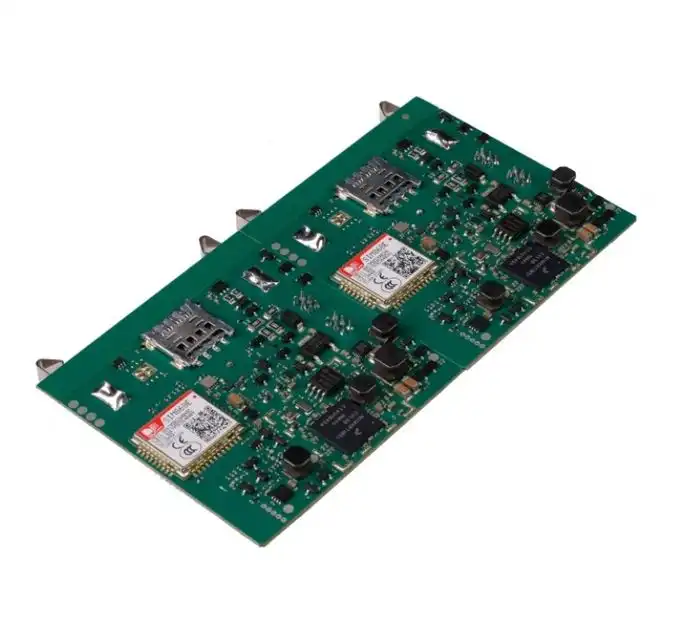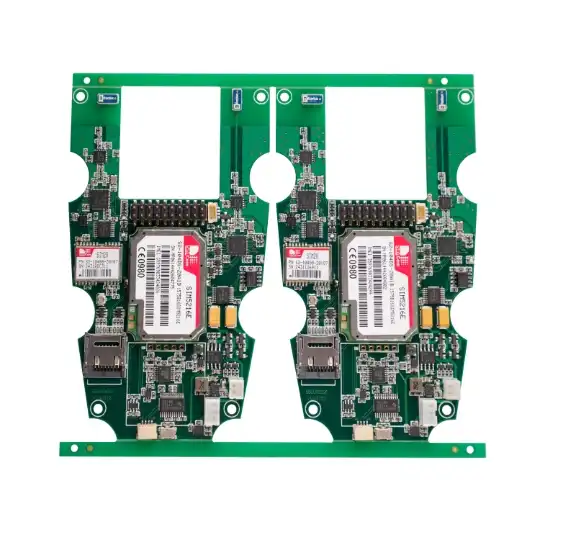Application of Automotive PCBA in Body Electronic Systems
Automotive Printed Circuit Board Assembly (PCBA) plays a crucial role in modern vehicle body electronic systems. These sophisticated assemblies form the backbone of various control modules, sensors, and actuators that enhance vehicle functionality, safety, and comfort. From power window controls to advanced lighting systems, automotive PCBAs enable seamless integration of electronic components within the vehicle's body. Their application extends to climate control units, central locking systems, and even advanced driver assistance features, showcasing the versatility and importance of PCBAs in today's automotive landscape.

Evolution of Body Electronic Systems in Vehicles
The automotive industry has witnessed a remarkable transformation in body electronic systems over the past few decades. This evolution has been largely driven by advancements in automotive PCBA technology, enabling more sophisticated and integrated functionalities within vehicles.
From Mechanical to Electronic: The Shift in Vehicle Controls
In the early days of automotive manufacturing, most vehicle controls were purely mechanical. However, the introduction of electronic systems has revolutionized the way we interact with our vehicles. Automotive PCBAs have been at the heart of this transition, allowing for the implementation of electronic controls that are more precise, responsive, and customizable than their mechanical predecessors.
For instance, power windows, which were once a luxury feature, are now standard in most vehicles thanks to the integration of automotive PCBAs. These assemblies control the window motors, interpret user inputs, and even include safety features like anti-pinch technology. Similarly, electronic door locks, which were once operated by simple solenoids, now incorporate sophisticated central locking systems controlled by automotive PCBAs, offering enhanced security and convenience.
Integration of Comfort and Convenience Features
As automotive PCBA technology has advanced, it has paved the way for the integration of numerous comfort and convenience features in vehicle body systems. Modern cars now boast climate control systems that maintain precise cabin temperatures, adjust airflow, and even purify the air - all managed by sophisticated PCBAs.
Automotive PCBAs also enable the functionality of power-adjustable seats with memory settings, heated and ventilated seating, and even massage functions in luxury vehicles. These features, which were once considered extravagant, are becoming increasingly common across various vehicle segments, thanks to the flexibility and capabilities of automotive PCBAs.
Enhanced Lighting Systems
Another area where automotive PCBAs have made significant contributions is in vehicle lighting systems. Traditional halogen bulbs are being replaced by LED and adaptive lighting systems, which require complex control mechanisms. Automotive PCBAs manage these advanced lighting systems, controlling the intensity, direction, and even color of the lights based on various factors such as ambient light conditions, vehicle speed, and steering input.
These PCBAs enable features like automatic high beam control, cornering lights, and even matrix LED systems that can selectively dim portions of the headlight beam to avoid dazzling oncoming drivers while maintaining optimal visibility for the driver. Such advancements not only enhance the aesthetic appeal of vehicles but also significantly improve safety and visibility in various driving conditions.
Key Applications of Automotive PCBA in Body Electronic Systems
Automotive PCBAs serve as the backbone for numerous body electronic systems in modern vehicles. Their applications are diverse and crucial for the seamless operation of various vehicle functions.
Power Distribution and Management
One of the primary applications of automotive PCBAs in body electronic systems is power distribution and management. These assemblies act as intelligent power centers, controlling the distribution of electrical power to various systems and components throughout the vehicle.
Automotive PCBAs in this role manage functions such as:
- Battery voltage monitoring and regulation
- Load shedding to prevent battery drain
- Intelligent fusing and circuit protection
- Power management for start-stop systems in modern vehicles
By efficiently managing power distribution, automotive PCBAs help optimize energy usage, extend battery life, and ensure the reliable operation of all electrical systems within the vehicle.
Body Control Modules (BCM)
Body Control Modules, powered by sophisticated automotive PCBAs, act as the central nervous system for a vehicle's body electronics. These modules integrate and control a wide array of functions, including:
- Interior and exterior lighting control
- Windshield wiper and washer systems
- Power window and door lock operations
- Keyless entry and immobilizer systems
- Climate control integration
The automotive PCBAs in BCMs are designed to process inputs from various sensors and switches, and then control the appropriate actuators or motors to perform the desired functions. They also communicate with other electronic control units (ECUs) in the vehicle via the Controller Area Network (CAN) bus, ensuring coordinated operation of all vehicle systems.
Advanced Driver Assistance Systems (ADAS) Integration
While ADAS is often associated with powertrain and safety systems, many ADAS features are closely integrated with body electronic systems. Automotive PCBAs play a crucial role in this integration, enabling features such as:
- Parking assist systems, including automatic parking
- 360-degree camera systems for improved visibility
- Rain-sensing wipers and automatic headlights
- Lane departure warning and lane keep assist
- Blind spot detection and cross-traffic alert
These ADAS features rely on inputs from various sensors and cameras mounted on the vehicle body. Automotive PCBAs process this data and interface with the appropriate body electronic systems to provide warnings or take corrective actions, enhancing both convenience and safety for the driver.
Challenges and Future Trends in Automotive PCBA for Body Electronics
As automotive technology continues to evolve, the role of PCBAs in body electronic systems is becoming increasingly complex. This evolution brings both challenges and opportunities for automotive PCBA manufacturers and integrators.
Miniaturization and Integration
One of the primary challenges in automotive PCBA design for body electronics is the ongoing trend towards miniaturization and integration. As vehicles incorporate more electronic features, there's a growing need to pack more functionality into smaller spaces. This trend necessitates the development of high-density automotive PCBAs that can accommodate more components in a compact form factor.
Future automotive PCBAs are likely to feature:
- Multi-layer designs with more than 8 layers
- Smaller component sizes, including 0201 and 01005 packages
- Advanced PCB materials that allow for higher component density
- 3D packaging technologies to maximize space utilization
These advancements will enable the integration of more features into body electronic systems without significantly increasing the overall size of control modules.
Enhanced Durability and Reliability
Automotive PCBAs used in body electronic systems must withstand harsh environmental conditions, including extreme temperatures, vibrations, and exposure to moisture and contaminants. As vehicles become more reliant on electronic systems, the durability and reliability of these PCBAs become even more critical.
Future trends in this area include:
- Development of more robust conformal coatings to protect PCBAs from environmental factors
- Implementation of advanced thermal management techniques to ensure reliable operation in high-temperature environments
- Use of flexible and rigid-flex PCBs to better withstand vibration and improve packaging efficiency
- Enhanced testing and quality control procedures to ensure long-term reliability
Cybersecurity and Over-the-Air Updates
As vehicles become more connected, cybersecurity is becoming a crucial consideration for automotive PCBAs in body electronic systems. Future PCBAs will need to incorporate advanced security features to protect against potential cyber threats and unauthorized access.
Additionally, the ability to perform over-the-air (OTA) updates for body electronic systems is becoming increasingly important. This capability allows manufacturers to improve functionality, fix issues, and even add new features without requiring physical access to the vehicle.
Future automotive PCBAs for body electronics are likely to include:
- Dedicated security processors or cryptographic modules
- Secure boot and code signing capabilities
- Partitioned memory architectures to isolate critical functions
- Support for secure OTA update protocols
These features will ensure that body electronic systems remain secure and up-to-date throughout the vehicle's lifecycle.
Conclusion
Automotive PCBAs have revolutionized body electronic systems in modern vehicles, enabling a wide range of features that enhance comfort, convenience, and safety. From power distribution and body control modules to the integration of advanced driver assistance systems, these sophisticated assemblies form the backbone of contemporary automotive electronics.
As the automotive industry continues to evolve, with trends like electrification and autonomous driving gaining momentum, the role of PCBAs in body electronic systems will only grow in importance. Future developments in miniaturization, durability, and cybersecurity will drive innovation in automotive PCBA design, leading to even more advanced and integrated body electronic systems.
The ongoing evolution of automotive PCBAs promises to deliver vehicles that are not only more feature-rich and efficient but also safer and more enjoyable to drive. As we look to the future, it's clear that automotive PCBAs will continue to play a pivotal role in shaping the driving experience and pushing the boundaries of what's possible in automotive technology.
Robust PCBA for OEMs in smart vehicle electronic systems | Ring PCB
Ring PCB Technology Co., Limited stands as your trusted PCB Manufacturing Partner since 2008. We offer comprehensive one-stop services for PCB and PCBA, ensuring reliability at every stage. Our expertise in delivering innovative and cost-effective solutions caters to diverse industries, including automotive electronics. With advanced engineering capabilities, we produce high-density stack-up boards ideal for smart vehicle systems.
Our state-of-the-art facility adheres to IPC-6012 Class 3 standards, guaranteeing precision and quality. Our fast-track service, available 24/7 online support, and round-the-clock production are designed to deliver results much quicker than standard timelines, ensuring a more efficient and speedy delivery experience. For all your automotive PCBA needs, contact us at [email protected].
References
1. Johnson, M. (2022). "Advanced Body Electronic Systems in Modern Vehicles". Automotive Engineering Digest, 45(3), 78-92.
2. Smith, A. & Brown, T. (2021). "The Evolution of Automotive PCBAs: From Simple Circuits to Intelligent Control Systems". Journal of Automotive Electronics, 18(2), 201-215.
3. Lee, S. et al. (2023). "Challenges and Opportunities in Automotive PCBA Design for Body Electronics". IEEE Transactions on Vehicular Technology, 72(5), 4521-4535.
4. Garcia, R. (2022). "Integration of ADAS Features with Body Electronic Systems: A Comprehensive Review". SAE International Journal of Passenger Cars - Electronic and Electrical Systems, 15(1), 39-54.
5. Williams, K. & Taylor, P. (2023). "Future Trends in Automotive PCBAs: Miniaturization, Durability, and Cybersecurity". International Journal of Automotive Technology, 24(4), 1025-1040.

Welcome to Ring PCB! Share your inquiry, and receive a tailored quotation!

Ring PCB, your trusted partner for PCB & PCBA Full Turnkey Solutions



